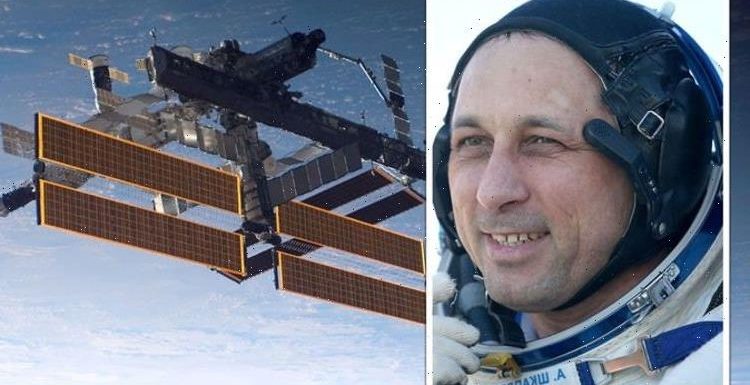
Man on Moon & Mars landing- Russia space plans unveiled
We use your sign-up to provide content in ways you’ve consented to and to improve our understanding of you. This may include adverts from us and 3rd parties based on our understanding. You can unsubscribe at any time. More info
The International Space Station (ISS) will be centre stage today as two Russian cosmonauts conduct a spacewalk. Commander Anton Shkaplerov (below) and Flight Engineer Pyotr Dubrov of Expedition 66 will leave the ISS for seven hours. They will exit the Poisk module’s airlock where they will collect their spacewalking gear. Donning their Russian Orlan spacesuits, the pair will then kit out the station’s new Prichal module.
They will install handrails, rendezvous antennas, a television camera, and docking targets, according to NASA.
Prichal docked to the Nauka multipurpose laboratory module on the ISS in November last year.
Footage of the spacewalk will be broadcast live on NASA TV, the NASA app and the agency’s website.
Amid the latest Russian spacewalk, a throwback documentary reveals just how much the country has contributed to the ISS due to the Russian space advancements throughout history.
The 2014 documentary ‘Cosmonauts: How Russia Won the Space Race’ charts the Soviet Union’s infamous so-called “space race” with the US in the Twentieth Century.
JUST IN: End of the world warning as Earth’s insides are cooling faster than scientists though


The feature-length film, voiced by the actor Paul McGann, examines how many Soviet technological breakthroughs are still used in space exploration today.
He said: “In reality, the ISS is the greatest testament to the achievements of the mighty Soviet space programme.
“Its very existence depends on technology and expertise built up by the Soviets and Russians over 50 years of space exploration.”
Some of the technologies used in the ISS have their origin in the Soviet Union’s Salyut 7 space station, which orbited Earth until 1991.
The ISS is also partly inspired by its predecessor, the Soviets’ Mir station, which was in use until 2001.

Mr McGann added: “The station’s crucial life support systems are based on those developed on Salyut 7 and Mir.
“The spacesuits they use are Russian-made, descendants of the suit [Alexei] Leonov wore on the first spacewalk and those designed to walk on the moon.
“And, since 2011, the only way to get to the station has been in a Soyuz capsule mounted on the top of an R-7 rocket – updated versions of the originals designed by Sergei Korolev half a century ago.
“The Soviets may have lost the race to the Moon, but our continued presence in orbit owes everything to the Russians’ determination to conquer space.”
DON’T MISS:
Putin’s puppet! Fury at Nord Stream 2 as Germany fails to apply Russian pressure [LATEST]
Bermuda Triangle breakthrough? Investigators enthused by Flight 19 wreckage claims [INSIGHT]
Archaeologists stunned by Ancient Greek device: ‘Have to rethink history of technology’ [ANALYSIS]

Today’s mission is the first spacewalk of 2022 and comes ahead of the first scheduled docking to Prichal in March.
The docking will see a Soyuz spacecraft carrying three cosmonauts join the ISS as they become part of the Expedition 67 crew.
The spacewalk will be the third in Shkaplerov’s career and the fourth for Dubrov.

It is also the 246th spacewalk carried out at the space station in total.
Further spacewalks are planned for later this year, including to fit a European robotic arm on the Nauka laboratory and to activate the module’s airlock.
Clips from ‘Cosmonauts: How Russia Won the Space Race’ are available on the BBC Four website.
Source: Read Full Article